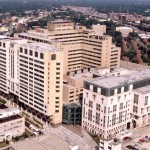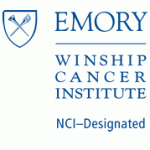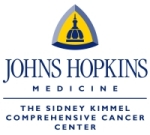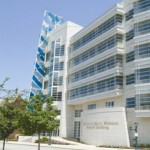Team Draft Uses Power to Tackle Lung Cancer Research and Awareness
Thursday, June 7th, 2012 “I must do all I can to raise awareness about lung cancer research and treatment – make it something we talk about around the dinner table – because I don’t want any other families to go through what we’ve been through.”
“I must do all I can to raise awareness about lung cancer research and treatment – make it something we talk about around the dinner table – because I don’t want any other families to go through what we’ve been through.”
Those heartfelt words came from Chris Draft – former NFL linebacker and current lung cancer awareness advocate – after touring UC San Diego Moores Cancer Center in May. Draft lost his long-time love, wife Keasha (38), in December 2011, to stage 4 lung cancer. Keasha was a vibrant, young non-smoker who led a healthy, active lifestyle.
“She was so beautiful and strong,” recalled Draft as he posed for pictures – with Keasha displayed on his iPAD – at various locations throughout Moores Cancer Center. “We have to change the perception that lung cancer is a smoker’s disease and raise awareness as to how prevalent it is.”
UC San Diego Moores Cancer Center is one of more than 30 cancer centers Draft has toured, meeting with lung cancer specialists, including Scott Lippman, MD, Director of Moores Cancer Center.
“Translating lab discoveries of genetic tumor drivers to the clinic is changing cancer medicine,” explained Lippman. “Lung cancer is a great candidate for personalized medicine based on this translation. Early clinical trials based on this lab research can tell you very quickly if the lab data apply to selected tumors in human patients, sometimes within the first few patients. If you’re hitting the right molecular pathway in the right patient, the cancer will be disabled and the patient will respond quickly.”
Draft and Lippman speak a similar language, the language of the competitor: know your enemy, exploit its weakness. In this case, the common enemy is lung cancer. Lippman, who took the reins at Moores Cancer Center in early May, led the Lung Cancer Program of the MD Anderson Cancer Center Support Grant and is editor-in-chief of the AACR journal Cancer Prevention Research. Draft recently founded the Chris Draft Family Foundation, dedicated to eradicating lung cancer. The two plan to meet again this weekend at the ASCO (American Society for Clinical Oncology) conference, to trade ideas and catch up with other industry insiders.
“Having access to a cancer center, such as Moores, in your own neighborhood is so important too,” said Draft. “The cost and difficulty of traveling, the anxiety involved, can be overwhelming. San Diegans are fortunate because Moores Cancer Center is here, right here. You’ve got what you need medically and you’re still surrounded by family, friends and the familiar.”
Lippman also believes that keeping open the channels of communication between comprehensive cancer centers (CCCs; there are 41, nation-wide as of Spring 2012), will help immensely. “Federal funding is tight everywhere. Translating and sharing on a national level, or linking the CCCs, will allow us to go farther, faster.”
For Draft, the end goal is straight forward. “I want to make lung cancer an issue that is so big, so talked about, that no one can ignore it.”
Respond and Donate





